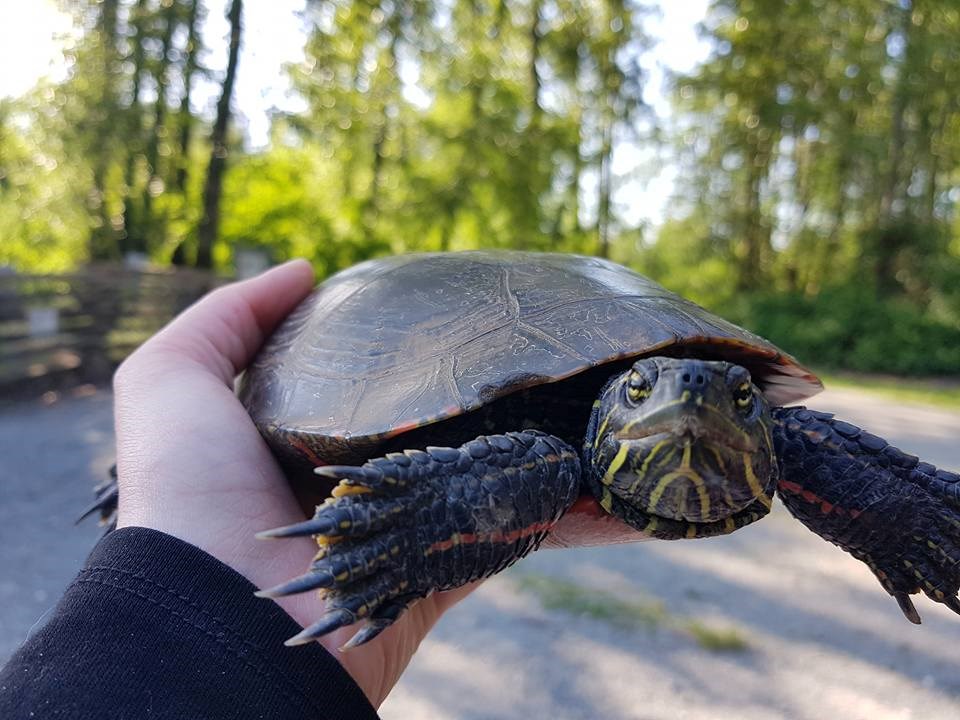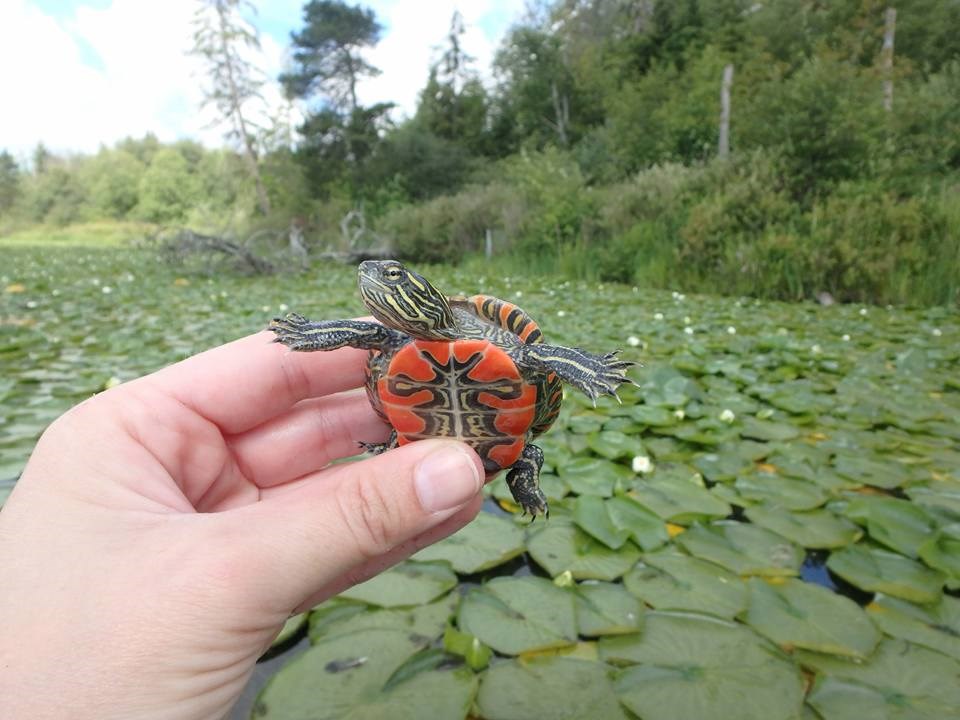 The painted turtle gets its name from the red markings on its shell and yellow stripes “painted” on its head, neck, legs and tail. Photo Coastal Painted Turtle Project
The painted turtle gets its name from the red markings on its shell and yellow stripes “painted” on its head, neck, legs and tail. Photo Coastal Painted Turtle Project
One organization is hard at work trying to save B.C.'s only native freshwater turtle by protecting their young during nesting season.
Volunteers, students and biologists with the Coastal Painted Turtle Project monitor female western painted turtles as they lay their eggs and put a cage over their nests to protect the eggs from predators.
"It's really vital that we protect what remaining native populations and do our best to try and boost their numbers. They are a really beautiful iconic species and were very important to First Nations historically," says Deanna MacTavish, wildlife biologist with the Coastal Painted Turtle Project.
The Committee on the Status of Endangered Wildlife in Canada (COSEWIC) has designated western painted turtles in southwestern B.C. as threatened and they are listed as special concern everywhere else in the province.
MacTavish says the coastal population has suffered from habitat loss and part of their work involves building nesting beaches to provide space for the females to lay their eggs.
Western painted turtles also face threats from introduced species such as pet turtles, which spread diseases and bullfrogs, which eat the hatchlings.
 Photo: Coastal Painted Turtle Project.
Photo: Coastal Painted Turtle Project.
She says through population surveys they have noticed an increase in areas where "we've been doing a lot of work" and says people can help by "keeping an eye out for turtles especially during nesting season, which is mid-May to mid-July and letting us know if they see turtles on land laying eggs. They can also help by not releasing pet turtles into the wild."


